

Age: 53
Sex: female
Date: 17 Jan 1920
Place: Cross Keys Public House, Laurence Street, Chelsea Embankment
Frances Buxton was murdered at the Cross Keys public house in Chelsea, London.
She was the landlady of the pub and lived there alone.
Her body was found in the cellar on a pile of smouldering sawdust.
The bar door to the pub was found open at 1.30am on Sunday 18 January 1920 by a police constable who then went in and found smoke issuing from a pile of sacks and sawdust in a cellar.
The fire brigade was called and in dealing with the outbreak discovered the body of Frances Buxton beneath the smouldering sacks with her head battered to a pulp by some heavy instrument, possibly a bottle.
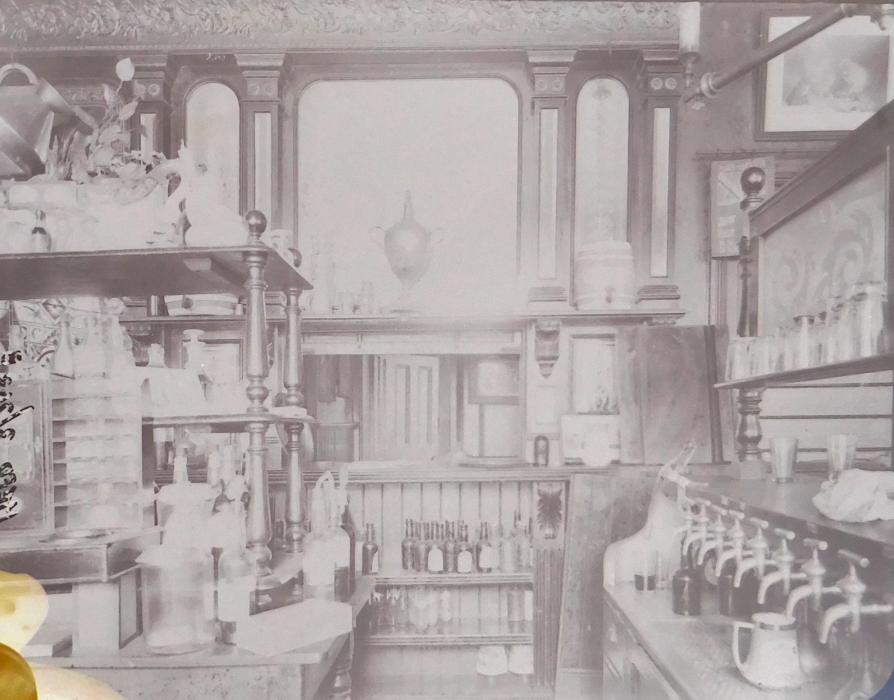
It was thought that her killer had hidden himself in the pub before she had closed on the Sunday night and after killing her had attempted incendiarism to obliterate the evidence of the crime. It was thought that Frances Buxton had disturbed him in his depredations in the bar and that he had ferociously attacked her. However, no money was found to be stolen from the till.
Several people said that they had seen a tall dark man in the bar of the hotel at 9.45pm on the night of 17 January 1920. It was said that he appeared to be more than 40 years of age and that no one saw him leave. However, after the tall man's identity was described at the inquest, the tall man went to the police where he gave an account of his movements and the police said that they were satisfied with his statements and he was ruled out of the enquiry.
The murder became noted for the search for another man that had been seen in the pub a few days before her murder who was titled in the press as the 'Glad eye man', because of the way he was seen to be looking at Frances Buxton. It was said that the 'Glad eye man' had been prying into her affairs and had tried to enter her private room on the night of 16 January 1920 but that she had put him out.
It was also reported that Frances Buxton was said to have thought that the pub was being watched but added that she had thought that it was the police who were watching it to ensure that the pub was being conducted properly.
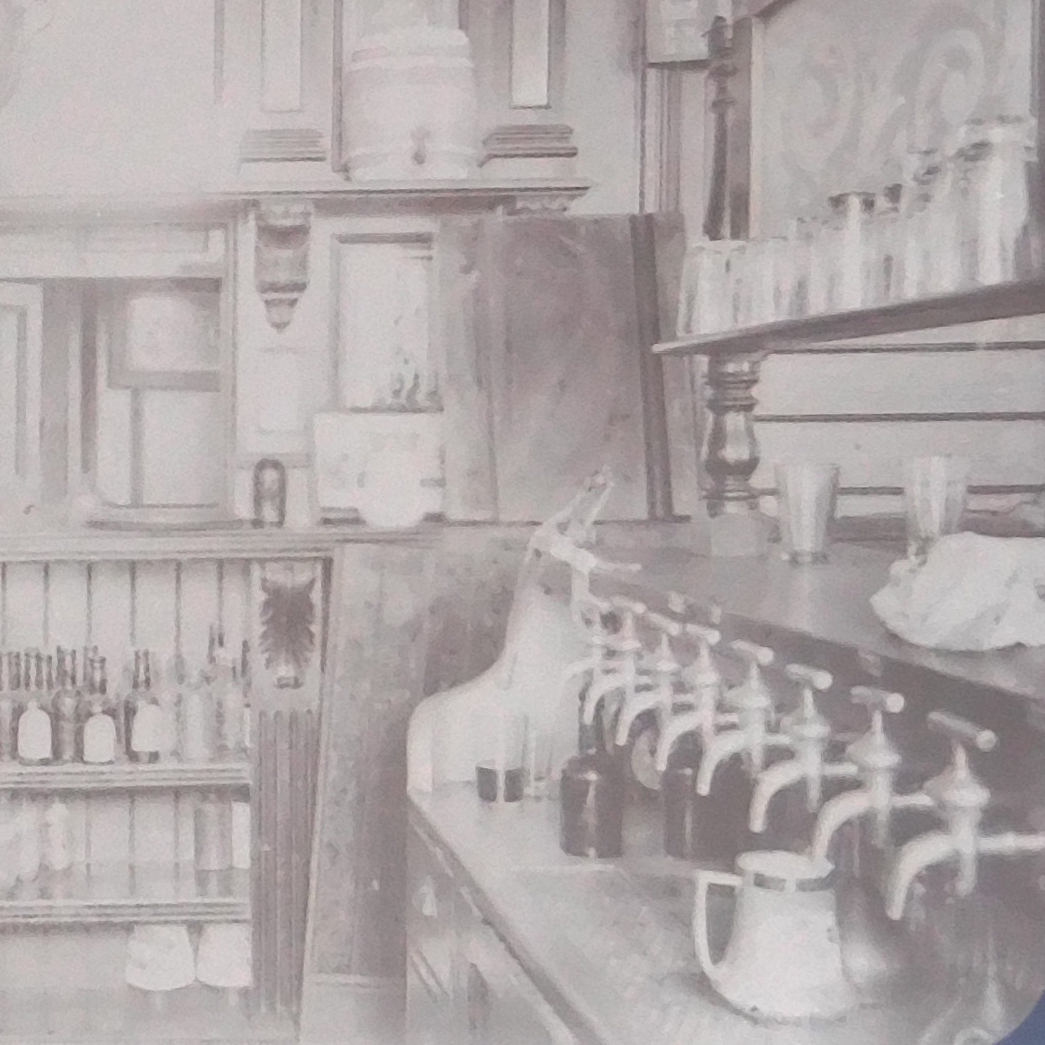
Although the police thought that nothing from the till had been stolen, they said that they thought that about £20 was missing from the takings from the house for the few days previous to the murder.
It was also found that some of her jewellery was missing from the pub and the police made a request to pawnbrokers to be on the lookout items of jewellery brought into them since 18 January including a diamond crescent brooch, a diamond star brooch and a heavy ring with gipsy claw setting, all items that Frances Buxton was said to have been wearing the night she was killed. However, they were never recovered.
There was also a theory that two men had been involved with the crime and that it was premeditated by someone acquainted with the pub.
Frances Buxton was married but had not lived with her husband for eleven or twelve years. Her husband identified her body and said that he had not seen her since August 1919, which was the only time they had seen each other since they had separated.
The Cross Keys public house was described as a fair-sized building that consisted of a basement, ground floor, and first and second floors. In the basement there were three cellars. The front of the ground floor was comprised of two public bars, the private and saloon bars, which were on the left of the house and approached through a covered archway. The archway itself formed part of a cul-de-sac, the end of which there was a high gate that led into a builder’s yard.
The saloon bar was practically a narrow passage that led into a small private parlour that was occupied by Frances Buxton. Immediately inside the saloon bar there were some stairs, noted as being quite unprotected, that led to an upper part of the house, whilst near the parlour door there was another passage, screened by a heavy curtain, that led to a lavatory which was used by the saloon and private bar customers. Near the lavatory there was a door that led to the cellar, which was noted as always being left unfastened.
The back of the house was protected by buildings and a high wall, whilst the parlour window, which was the only one on the ground floor at the rear of the house was protected by thick iron bars.
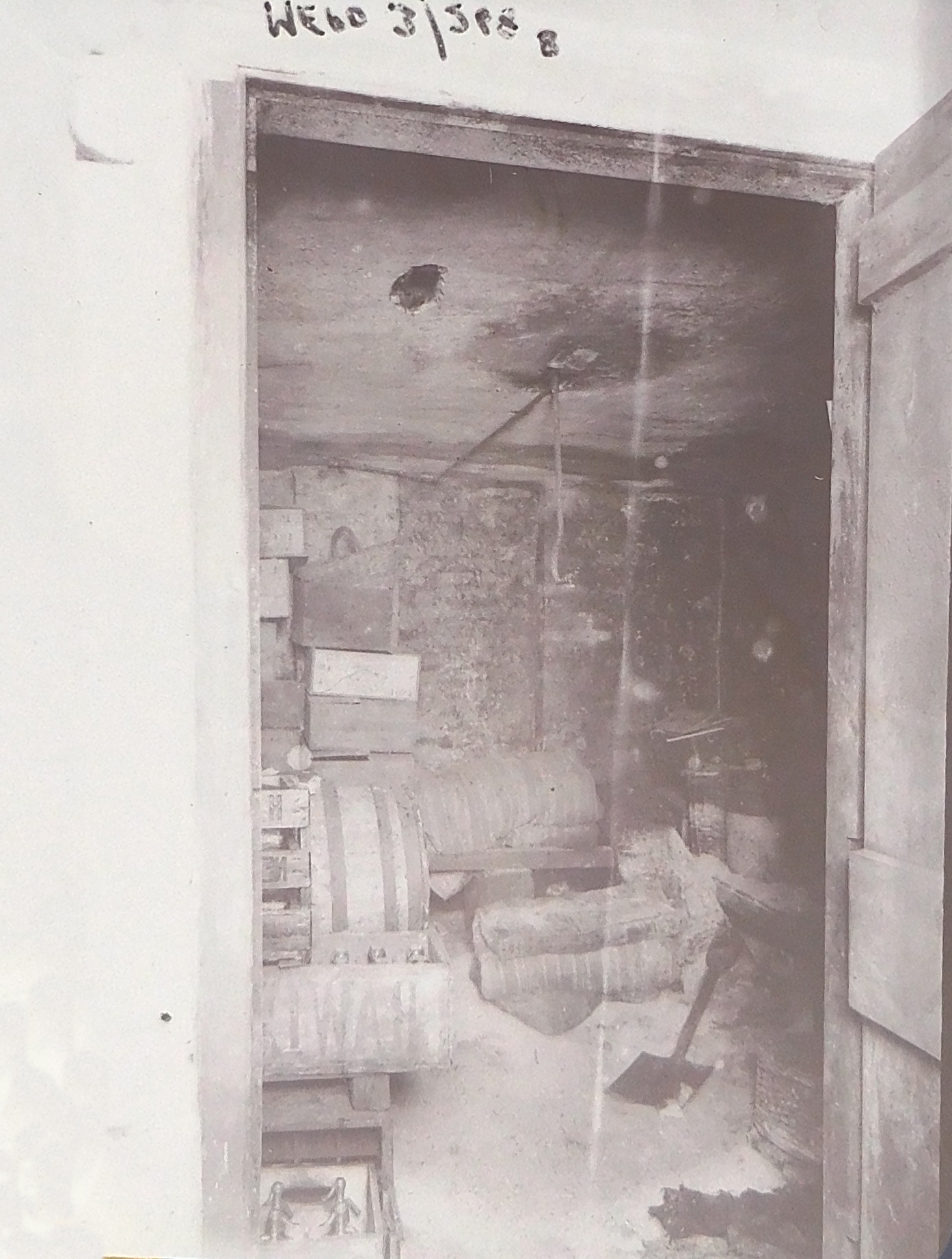
The first floor consisted of a kitchen, a large club room and a storeroom, whilst the top floor contained four bedrooms, only two of which were furnished, one of which was occupied by Frances Buxton.
Customers using the saloon bar were served with refreshments through an aperture measuring about 3ft 6in by 1ft 6in and the house was constructed such that any person serving in the bar could not see the customers in the saloon bar unless they were close to the window.
Frances Buxton had held the licence of the Cross Keys public house since 8 April 1915, and it was noted that during that period there had been no complaints received by the police as to the conduct of the house.
At 1pm on 7 January 1920, a policeman took up duty on the beat that embraced Lawrence Street where the Cross Keys was situated and as he passed at 10.50pm he tried all the doors and found that they were securely fastened. He noted that at that time there was a small light in the saloon bar under the archway. He again passed the pub at 11.30pm and tried the doors again, noting that everything was apparently in order and that the small light was still burning.
The policeman was relieved from duty at 12 midnight as he had been granted six hours off duty for attending police court earlier on. At that time another policeman took over his beat and visited Cross Keys for the first time at 12.45pm on 18 January 1920 whereupon he tried the public doors in Lawrence Street and then the private bar door under the archway and found them both to be securely fastened. He then approached the saloon bar door, which he said was closed, and when he pushed on it, found that it was open and then discovered that the place was full of smoke and in darkness.
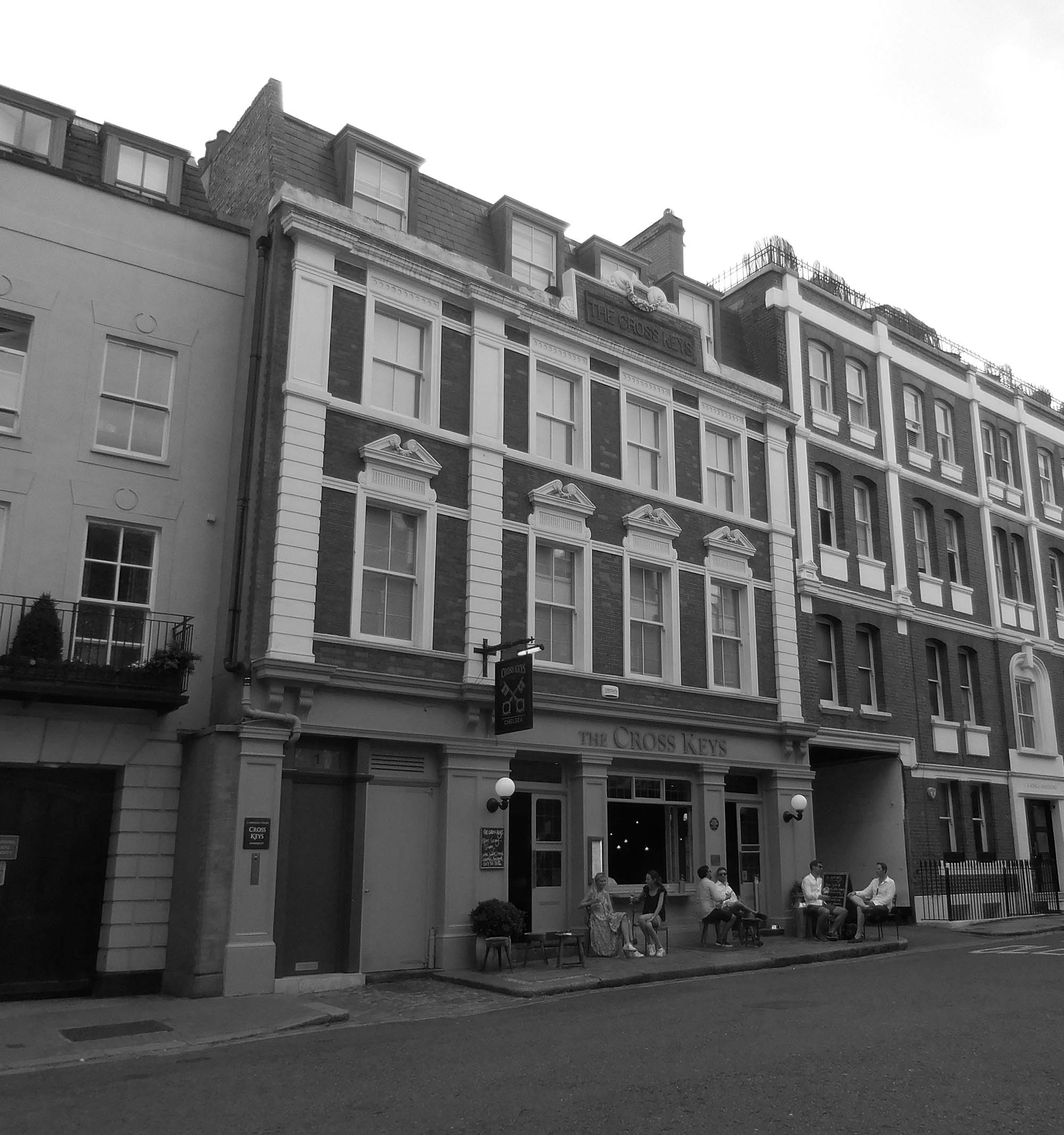
The policeman then immediately pushed the bell knob and called out loudly to arouse the inmates as he thought that the house was on fire, but when he received no reply he went in, and with the aid of his lamp, searched the ground floor and found everything undisturbed. He then went up to the first floor and when he found no-one there, he blew his whistle and shouted out. He then went up to the top floor and searched all the rooms but found that they were all unoccupied. He noted that one of the bedroom doors was closed but not locked and said that when he opened the door, he found a small gas jet burning, and saw that the room was in perfect order. He noted that the bed was made, but that it appeared that it had been laid upon, as though some person had been resting on it during the day.
The policeman said that when he went downstairs he discovered that the smoke was coming from the cellar, but said that he was unable to go down as the smoke was too thick.
He said that he then went out into the street again and blew his whistle and then ran to a fire-alarm post in Church Street close by and called the Fire Brigade, which he said took him about three minutes. He said that a motor pump arrived within a few minutes and the he returned to the pub with it.
The policeman said that he then made an examination of the saloon bar door and found no signs of a forcible entry, noting that the lock was a Yale pattern, but later said that he could not remember the position of the two bolts, one of which was at the top of the door and the other at the bottom.
When the Station Officer of Brompton Fire Station in south Parade went down into the cellar with some other firemen, he discovered what he throught appeared to be a heap of smouldering rubbish but said that upon closer examination discovered was the body of Frances Buxton. He said that she was fully dressed, partly covered with sawdust, and was apparently suffering from burns and suffocation. He said that she was lying with her feet towards the cellar stairs and that there were some pieces of burnt sacking underneath and between her legs below the knees. He said that the burns on her body were slight and that her body was still warm, and that thinking that she was still alive, he removed her upstairs and laid her on the floor in the saloon bar where first aid was rendered.
The Station Officer said that he then discovered for the first time that Frances Buxton had severe wounds on her face and head, and he immediately sent the policeman there off to get medical aid.
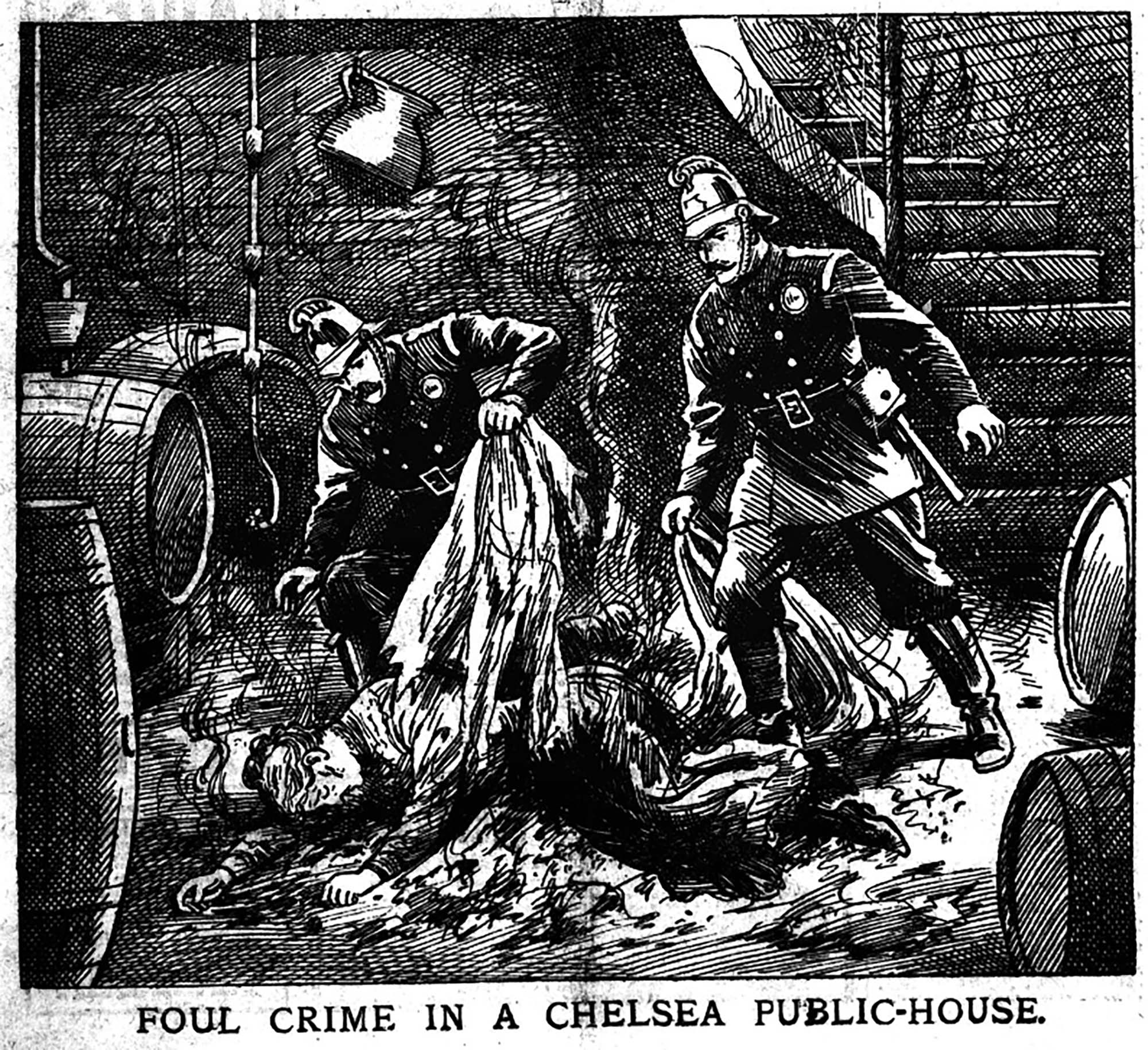
A doctor that had lived in Oakley Street arrived at the scene shortly after and pronounced life extinct, certifying that her death was undoubtedly caused by a fractured skull.
A detective inspector and other CID officers were quickly on the scene and following a thorough examination of the premises they found that everything from the ground floor upwards was undisturbed. In the till, which they said had apparently been made up the evening before, they found a total of £7. 0. 10d, whilst a bag containing 5/- in copper was found in a drawer beneath the till. The police also found a gold watch and chain hanging on a bedrail in Frances Buxton's bedroom and in a drawer, they found £16. 7. 0. They also found some small articles of jewellery on her dressing table.
The police said that there was not the slightest trace on the saloon bar door, or any other part of the house, to show that a forcible entry had been effected.
At the foot of the cellar stairs they found a broken quart glass bottle lying in and around a pool of blood that was about eight feet away from where the firemen found the body of Frances Buxton in the heap of sawdust. When the police examined the broken bottle for fingerprints, they found a fingerprint which was sent away for closer examination, but it was concluded that the impression was no use for identification purposes. A further careful examination of the premises revealed no other fingerprints or weapons that might have been used by the assailant.
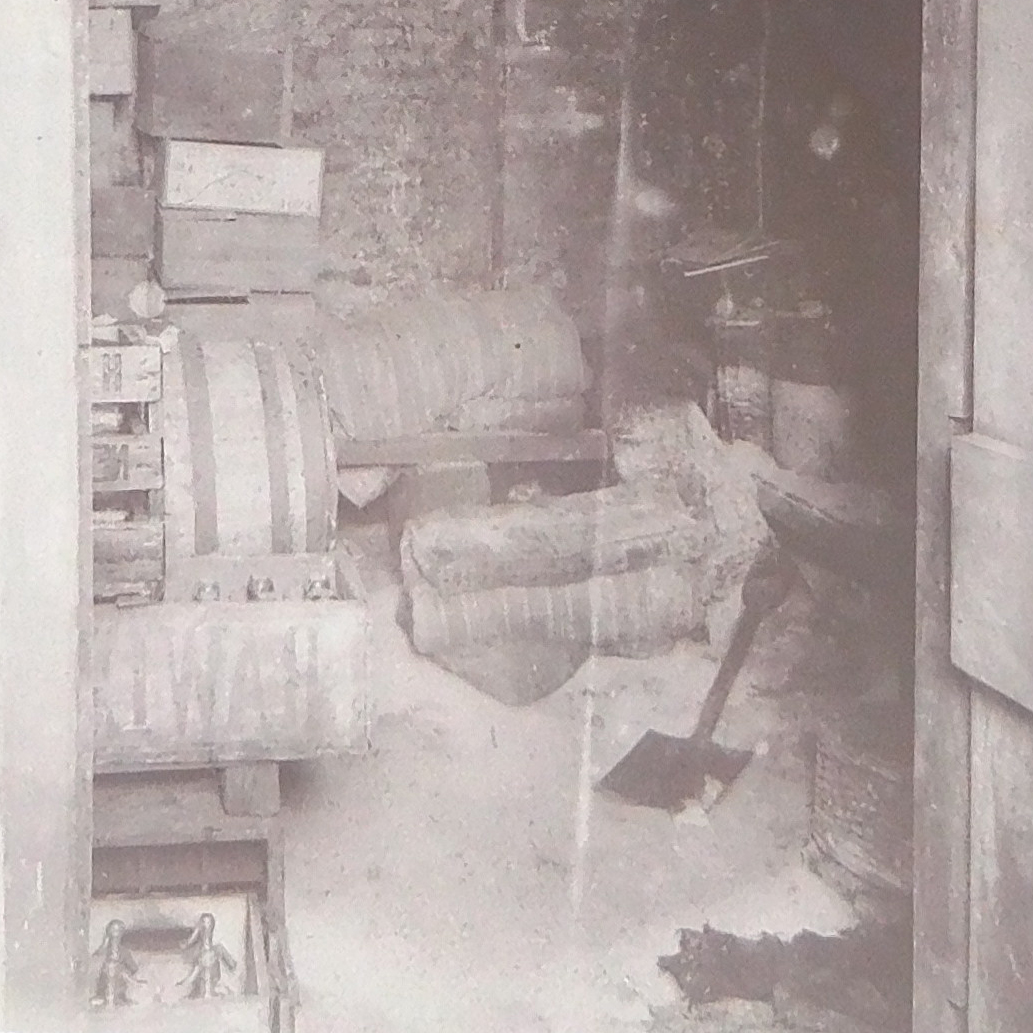
The police stated that at the time of the discovery of Frances Buxton's body at the pub, they had no immediate information respecting Frances Buxton's habits, names of employees of friends.
Shortly after they ascertained that a 63-year-old man who lived at a common lodging house at 23 Lawrence Street, which was close by, was employed by her to do odd jobs about the premises and when they went to see him they were given the details for the barmaid who lived in Perene Street in Chelsea and for the charwoman who lived at 14 North Block in Peabody Buildings in Chelsea and they then took statements from them.
The police determined from the barmaid, which had been employed by Frances Buxton since June 1919 that she had left the house at about 10.30pm on Saturday 17 January 1920 with her daughter, leaving Frances Buxton as far as they could say alone in the house. It was further noted that the barmaid was the last person that they could trace to have seen Frances Buxton alive.
The police then made an immediate search of the neighbourhood, visiting coffee stalls, lodging houses and making every possible enquiry to trace the assailant.
The police then ascertained from the barmaid that on the evening of 17 January 1920, Frances Buxton had been wearing a diamond crescent brooch set with about twelve diamonds that graduated from the centre that was about 2 1/2 inches long, with a gold safety pin attached, a diamond star brooch about one inch in diameter set with a large pearl in the centre and with small diamonds radiating therefrom, a gold curb bracelet with a plan and heavy snap fastening and with a gold safety chain attached, a gold ring with gipsy setting, a very much worn gold ring, a silver marquise ring that was heavily chased and a wedding ring.
The police said that when they examined Frances Buxton's body, they found the wedding ring and her marquise rings still on her fingers and said that the star brooch was found in the saw-dust near her body, but that the rest of her jewellery was missing and was never traced. Descriptions of the missing items were released on 18 and 23 January 1920 and special enquiries were made at jewellers etc. but without result.
Following further enquiries, the police ascertained that since July 1916, that Frances Buxton had slept in the house alone, with the exception of the occasional male visitor:
The police then determined that Frances Buxton's husband was the proprietor of the Sussex Hotel in Sidley, Bexhill-on-sea and they arranged for him to attend Chelsea police station to be interviewed, which he agreed to do on 19 January 1920.
In the meantime, the police interviewed customers who were frequenters of the house, and particularly those who had attended on the evening of 17 January 1920 but said that none of them were able to supply them with any useful information. However, they said that they were able to ascertain from the barmaid and her married sister and several other people that had been in the saloon bar at closing time on 17 January 1920, that shortly before 10pm they had seen a man they described as being aged about 40, 6 feet tall, with a dark complexion and dressed in a dark overcoat with a cap pulled over his eyes enter the saloon bar and call for a bitter which Frances Buxton served him. Two of the barmaid’s friends said that they left the bar at about 10pm, leaving the stranger there, and all of them said that they had never previously seen him in the house before.
The police determined that no one saw the man leave noting that although the barmaids daughter said that she entered the serving side of the bar and assisted her mother to wash the glasses after the house closed, neither of them saw the man leave either.
However, the police put the man's description in the newspaper and said that a man who lived in Heslop Road in Balham, a salesman in the Linen Department of Messrs Fred Gorringe and Co.'s business in Buckingham Palace Road called into the police station and stated that he was that man. The police then took a statement from him and made enquiries and then determined that they were satisfied that he had nothing to do with the crime.
When the police ascertained that the architect from Glebe Place had been in the habit of visiting Frances Buxton and staying with her after closing hours, they saw him and took a statement from him. When they spoke to him, they determined that when he had first known Frances Buxton, she had had a young man with her who helped to serve behind the bar but he shortly after joined the army and left. The architect said that shortly after Frances Buxton received a letter from him which she returned unanswered. He said that shortly after the young man joined the army he had entered the bar parlour of the Cross Keys public house and had seen Frances Buxton trying to secure the window and said that when he asked her why she was doing that, she had told him that she was afraid that the young man would return and get into the house. He said that she also told him that the young man had asked her to be allowed to visit her.
The police said that it subsequently came to their knowledge that the architect had had a key to the saloon door to enable him to enter the house when Frances Buxton was ill and said that when they questioned him about it, he admitted it, saying that about twelve months earlier Frances Buxton had given him a key for about a month or six weeks whilst she was ill but said that he had returned it to her after she got better.
The architect also admitted to the police that he had borrowed money from Frances Buxton from time to time but repaid her by cheque when it was convenient for him to do so, noting that at the time of her death he had owed her £7. 10. 0.
The architect also admitted that he had been on affectionate terms with Frances Buxton and said that in July 1917 he had stayed with her for four nights whilst his wife was away on holiday. The architect said that Frances Buxton had told him that the reason she had parted with her husband was because he had given her a bad disorder that had taken her eight years to get out of her system.
The architect also stated that certain letters that the police found in the house which were undated, bore no address and were signed 'Sin sin' were written by him to Frances Buxton.
The police said that when they investigated the architect’s movements on the night of 17 January 1920, they could in no way associate him with the crime.
The police said that when they looked into the background of the licensee of the Rose Hotel in Maidenhead who they determined had stayed several nights at the Cross Keys, they found out that he was an elderly gentleman and a mutual friend of both Frances Buxton and her husband and had been their friend for over thirty years, and the police concluded that he was in no way connected with the crime.
The police said that they also examined the movements of the barmaid, the charwoman, and the potman and satisfied themselves that they were also not involved with the crime.
When the police searched the pub they found a Will that Frances Buxton had made dated June 1917 in which she left the whole of her property, with the exception of two bequests of jewellery, to the decorators manager who was also known to have stayed some nights with Frances Buxton at the pub.
The decorators manager, who was 68-years-old, was interviewed and a statement was taken from him and it was found that he had been employed by Messrs John Barker in High Street, Kensington for the previous 20 years in their furnishing department, but had left their service in June 1919 and since then had only done odd jobs on his own account. He said that he had known Frances Buxton for the previous ten years, first becoming acquainted with her when she was the licensee of the Old George public house in Church Street, Kensington. He stated that he had been in the habit of visiting her whilst she had the Cross Keys and had assisted her in the business occasionally, managing the house for her when she was away on holiday or ill.
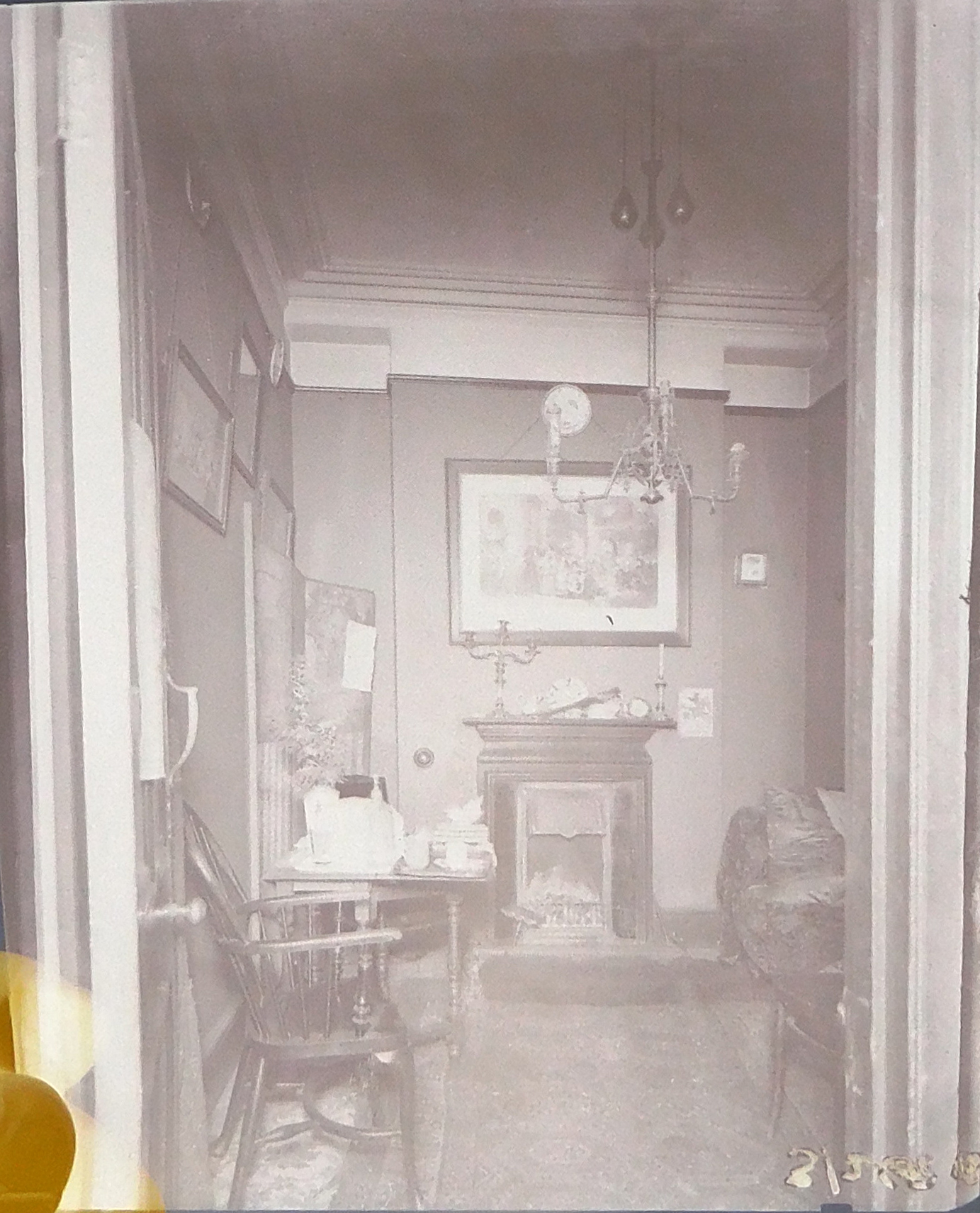
The police stated that when they determined that the decorators manager was practically the only person who would have benefitted by the death of Frances Buxton, they made a thorough investigation into his movements during the week preceding Saturday 17 January 1920, and particularly upon that day and night, but confirmed that his statement matched in every detail.
When the police interviewed Frances Buxton's husband on the morning of 19 January 1920, they found that he was 58 years old and had married Frances Buxton in Toronto, Canada on or about 1 February 1888. He said that two months after their marriage they came back to England and took over the licence of the White Hart public house in Fetter Lane, EC. He said that between that time and 1903 they ran various public houses in London and the suburbs after which in 1904 he became a manager to an engineer's business in Lancashire, during which Frances Buxton held the licence of the Angus Hotel in New Bridge Street, EC. He said that during the time that Frances Buxton was at the Angus Hotel, he went to America as a representative of several firms, remaining there for about one year and eight months and said that when he returned to England he stayed with Frances Buxton at the Angus Hotel, but said that they had numerous quarrels, principally, he said, because Frances Buxton was associating herself with the Suffragette movement and Socialism. He said that as a result in 1908 Messrs Lewis and Lewis, Solicitors, drew up a deed of separation which was entered into by both Frances Buxton and himself and that since that date they had never co-habited. Frances Buxton's husband said that under the deed, Frances Buxton declined to receive alimony and that he never contributed towards her support.
It was found that in 1914, Frances Buxton's husband joined the army and went to France, but was sent back to England because he was over age and that he was then transferred to Edinburgh where he was posted to Coast Defence duty.
Frances Buxton's husband said that in May 1919 he wrote Frances Buxton a letter suggesting that they might come to some arrangement with regard to the way that they were living and asked her to make an appointment to see him in London and said that a few days later he met her at Victoria Station, by appointment, but that no decision was arrived at as to their future mode of living and that he returned to Bexhill that night after putting Frances Buxton in a cab for Chelsea, and said that that was the last time he saw Frances Buxton alive. He added that in October 1919 he wrote Frances Buxton a letter respecting a payment for his insurance, saying that he got a reply, but said that since then he never heard or had any communication with her.
The police report noted that at the time that they interviewed Frances Buxton's husband, the tall man that had been seen in the saloon bar on the Saturday 17 January 1920 just before 10pm had not been traced and that as Frances Buxton's husband answered the tall man's description in every detail, he was closely questioned as to his movements, both on 17 January and on 18 January 1920. The particulars that he gave wee then phoned through to the Bexhill Police and were duly confirmed. The police also arranged for Frances Buxton's husband to be placed with a number of other men for identification by the people that had said they had seen the tall man in the bar, but various witnesses failed to identify him.
The police later identified two other people that had stayed at the pub late. The first was a 40-year-old director of Messrs Harrington, Day & Co., Shipbrokers of 147 Minories, EC. He said that on the night of 17 January he had left the Eight Bells public house in Cheyne Walk, Chelsea at 10pm accompanied by the second man, a temporary clerk at the Pensions Office in Burton Court, Chelsea. The director said that they walked together to the end of Oakley Street in Chelsea where they parted and that he got back to his lodgings at about 10.30pm and retired for the night, which was verified.
When the police questioned that temporary clerk, he said that the last time he visited the Cross Keys public house for refreshments was between 9.30pm and 9.45pm on Friday 16 January 1920 when he had one drink and had then left the house. He went on to say that on Saturday 17 January 1920 between 9pm and 9.20pm he had missed his dog, a small English Terrier, and that thinking that it might have gone to the Cross Keys he went there and pushed open the saloon door, but didn't enter. He said that he saw the barmaid and another girl and asked them if they had seen his dog, said that they said no and that he then left. The police report stated that his story was corroborated by the barmaid and the other girl.
The temporary clerk said that after leaving the Cross Keys he then went to the Rising Sun public house where he met the director and stayed until about 9.30pm when they both left, at which time he found his dog, and said that they then both went to the Eight Bells public house where they had a drink, staying until about 10pm when they both left, walking off along the embankment to the corner of Oakley Street where they parted.
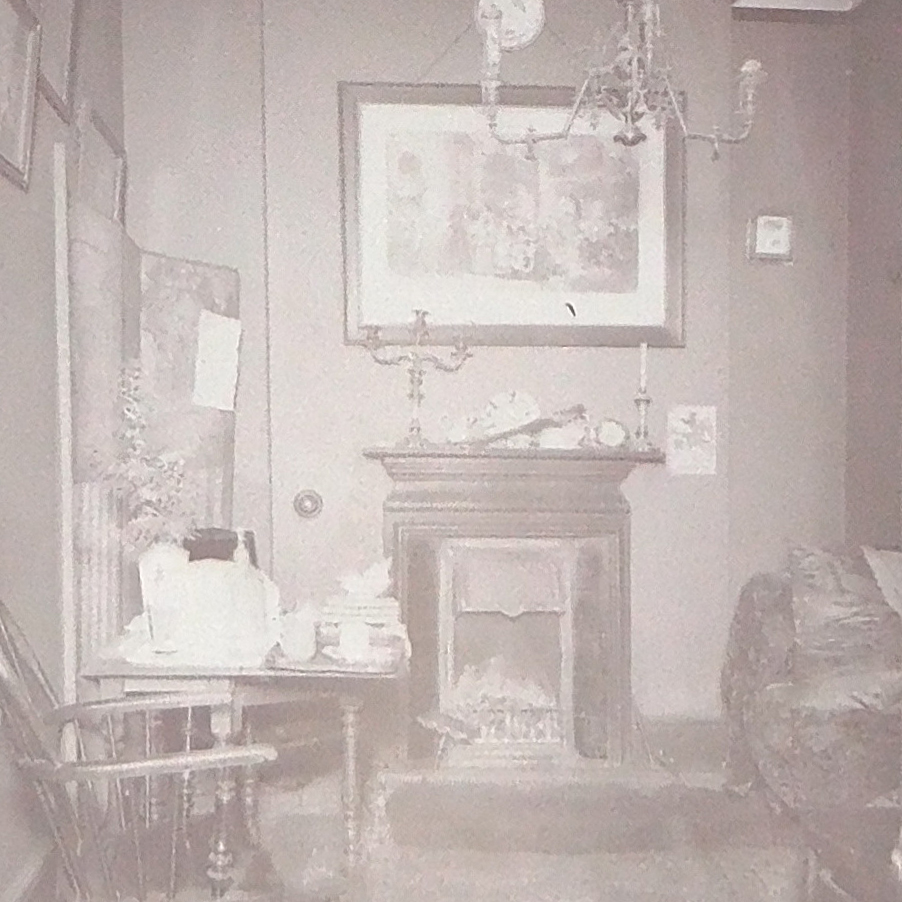
The temporary clerk said that his wife was away in Brighton and that he was not desirous of returning home early and so he walked up Oakley Street and called at a friend’s house in Markham Street in Kings Road, arriving at about 10.30pm. He said that when he knocked, a lodger answered the door and told him that his friend had gone to bed, which the police report stated was later confirmed with the lodger.
The temporary clerk said that after that he walked to Sloane Square where he got a bus and rode to Hart Street in Bloomsbury where he alighted and then walked through Bloomsbury Square to Southampton Row and then back to Theobalds Road where he boarded a 44 bus which he rode to Victoria from where he walked to Alderney Street where he lived, arriving back at 11.45pm.
When the police asked the temporary clerk why he had made that journey at that time of night, he said that he had no one at home and wished to see some life and bustle before returning home.
The police report noted that it was curious that the temporary clerk should have wished to travel to Bloomsbury for the purpose he stated at that time of night and noted that his landlady was not certain what time he arrived home, but stated that there was no evidence to connect him with the crime. They noted that the temporary clerk had a knowledge of the Cross Keys pub and of Frances Buxton's movements and that he had also admitted to staying with her previously after closing hours.
On 20 January 1920, the police received a telephone message from Kennington Police Station to the effect that a man who had taken a furnished room at 23 Princess Square in Kennington had left his lodgings at 7.30am on the Saturday 17 January 1920 and had not got back until 8.30am on the Sunday 18 January. A fellow lodger who said that he heard the lodger in his room and then later the same day heard the man leave his lodgings said that after the man had left, and didn't return', he went into the mans' room and opened a locked cupboard and found a ration book with a Clifton Road, Camberwell address, a letter from a builder in Marlow and a piece of paper that had the man's details relating to him being a Sapper in the Royal Engineers with number and company details and said that after he read of the tall stranger's description in the press, which he said was similar to the lodgers, and as the lodger had been out all night and then left, he informed the police.
When the police followed up the information, they called the police in Marlow and asked them to see the builder referred to who told them that the lodger was living in Camberley at the address given in the ration book. However, the police said that when they went to the Clifton Road address, they found that the lodger had left about a month earlier owing about a month’s rent. The police then went to the pensions office and determined that the ledger was in receipt of a pension which was being sent to his sister's house in Mysore Road in Lavender Hill. The police said that when they went there the lodger's sister told them that her brother had called at her house in the early evening of Saturday 17 January 1920 and that she had not seen him since.
The police report noted that at that time the description of the lodger appeared to be identical with that of the tall stranger, who was later identified and ruled out of the enquiry, seen in the bar by the bar maid and her daughter on the evening before the pub shut on 17 January 1920.
However, the police noted that his description also fitted that of a man who was described as being 36 to 40 years of age, 5ft 10in or 11 in tall, with a long shallow face, either clean shaven or with a fair moustache and who had been wearing a dress dark overcoat and bowler hat and who had been seen by the decorators manager and other witnesses.
The police noted that enquiries were made to trace the whereabouts of the lodger but that up to the time of the police report he had not been traced.
The police later took a statement from a customer who said that he had been in the Cross Keys on Friday 16 January 1920 between 1pm and 2pm and said that he had spoken to Frances Buxton who had asked him if he had noticed a stranger in the private bar, to which he said that he had not noticed anybody in particular and asked her what she meant. He said that she then told him that she thought that she was being watched and that a detective had been put on her. The customer said that he then asked her why she thought that and said that she had not seen him in the house before the previous Monday or Tuesday and that he was always trying to pry into her private affairs, and that among other things had asked her whether she lived by herself, adding that she had foolishly told him that she did. The customer said that he then told Frances Buxton that she was very foolish to mention that fact and advised her that the best thing she could do was see that her potman examined the house after closing time to see that no person had concealed themselves on the premises. The customer added that Frances Buxton had also told her that the man had tried to push himself into her parlour in order to have a drink.
The police later found that several people had also seen the man. A man from Beaufort Mansions in Chelsea said that he had been in the Cross Keys on Thursday 15 January 1920 between 1pm and 2pm and had seen a man answering the same description in the private bar.
A caretaker from Lawrence Mansions in Lordship Place, Chelsea, also said that he had been in the Cross Keys between 1am and 2pm on Friday 16 January 1920 in the company of the other customer and recalled hearing Frances Buxton tell him about the man trying to force his attention on her, noting that Frances Buxton had told him that the man had asked her for a bottle of whisky in the bar parlour.
The decorator’s manager said that on Thursday 15 January 1920, he had been in the private bar of the Cross Keys at about 1pm when he saw a man of the same description speaking to Frances Buxton. He said that after the man left that he chaffed Frances Buxton about having a fresh young man paying attention to her, and said that she replied that he had been coming in to the pub for two or three days and said that she had got him set.
The decorator’s manager said that he had observed the man watching Frances Buxton minutely and that that was why he had drawn Frances Buxton's attention to him.
The police report stated that there was no evidence that the man had been in the pub on the Saturday 17 January 1920, and after having made careful enquiries amongst customers and acquaintances of Frances Buxton had not been able to trace him.
The police report stated that the decorators manager had described the man as a person with 'the glad eye', meaning that he had been endeavouring to attract Frances Buxton's attention by smiling and winking at her, thus gaining the name from the decorator’s manager as the man with the 'glad eye'.
The police noted that the description of the man had been supplied to the press, but that so far, no person had come forward. It was noted that the man was a stranger to the customer of the house who saw him, but that it was thought that the persons that had described him would be able to identify him if they saw him again.
The inquest into Frances Buxton's death took place on 20 January 1920 at the Guardian's Office in Kings Road, Chelsea, during which much of the evidence known to the police was repeated but during which new statements were also heard.
The barmaid stated that she worked in the pub from 7pm till 10pm each night, but that on the night of 17 January 1920 she was of the opinion that she had left the premises soon after 10.20pm, adding that at that time there was no one else there except Frances Buxton but noting that from her position in the public bar she would not have been in a position to have seen everyone in the saloon bar. She added that it was the custom of Frances Buxton to leave £6 in the till for change for the following day and that Frances Buxton used to keep her money in a little basket which she apparently took up to her bedroom each night. She also stated that Frances Buxton used to go down to the cellar each evening after the house was closed to look after the beer for the next day.
The barmaid’s daughter said that she stayed with her mother at the pub until about 10.30pm when they left. She noted that during the evening she had seen people go upstairs to the club which was held upstairs.
The odd job man said that on the evening of 17 January 1920 he had gone to the pub at about 9pm and then left shortly after, noting that just before he left Frances Buxton asked him to go down to the cellar and put a pail under the waste-pipe, stating that after he did so there was a light burning when he left.
When the decorator’s manager gave evidence at the inquest, he referred to the young man that had worked behind the bar at the Cross Keys before leaving to join the army. He said that he had known Frances Buxton for about ten years and that some time before when she ran the Star Hotel in Isleworth, she had the young man there as a working partner and that when she took over the Cross Keys, he came with her. He said that one night about three years before the murder, Frances Buxton had come to his house in Shepherds Bush to ask him to come and stay with her to protect her from the young man's violence. The decorator’s manager noted that he had occasionally managed Frances Buxton's business for her when she was on holiday and that the last time he saw her was on 15 January 1920 between 1pm and 2pm. He noted that on that occasion he had seen the strange customer in the private bar, the man with the glad eye.
When he described the man that he had seen to the coroner at the inquest he said that he was aged about 36, 5ft 10in or 11itall, wearing a brown coat, a blue suit but could not say whether he had been wearing a cap or not. He added that he thought that the man had a fair moustache and had a very long face. He said that the thing that he noticed most about the man was that he followed Frances Buxton about with his eyes and kept on getting up and looking over the counter at her. He added that after the house was closed he spoke to Frances Buxton about the man, saying that he mentioned to her in a jocular manner that there was someone in the bar trying to give her the glad eye, to which he said she told him that the man had been there three or four days and that he had been fixing her but added that she had 'got him set'.
The decorators manager added that the average takings for the pub on a Saturday would have been between £9 and £12 and that he knew that Frances Buxton was in the habit of carrying a small basket in which she put her money and jewellery and that she used to carry a lot of money about with her. He added that he had often spoken to her on the subject. He said that when she closed Frances Buxton would make up her till for the next day with £5 in silver and then take the balance up with her to her room.
When the doctor gave evidence he said that he examined Frances Buxton's body at 1.05am on 18 January 1920 at which time she was lying on the saloon bar floor dead, and said that he took her internal temperature about half an hour after his arrival and concluded that he thought that she had been dead for less than an hour. He said that she had very bad lacerated wounds on the right side of her face and a deep wound on the side of her head, another on her left side and one more on the top of her head. He said that the front of her stockings and the lower part of her dress were burnt and that she was fully dressed. When the doctor referred to the cellar he said that he had seen a broken bottle there that might have been used to inflicted were Frances Buxton's wound, noting that there was a pool of blood by the broken bottle and added that he thought at the person wielding the bottle must had cut his hand.
The pathologist that carried out the post-mortem on Frances Buxton's body at 2pm on 19 January 1920, said that the external marks that he found on Frances Buxton's body were due to extreme violence and comprised of blows over her right temple, above the level of the right eye and ear. He said that one of them ran above the right ear and another, that he thought belonged to the same group, was about three inches above and in an 'L' shape. He noted that the wounds between her right eye and ear were clean cut, and that the skin there was cleanly cut and the tissue beneath was much lacerated and bloodstained.
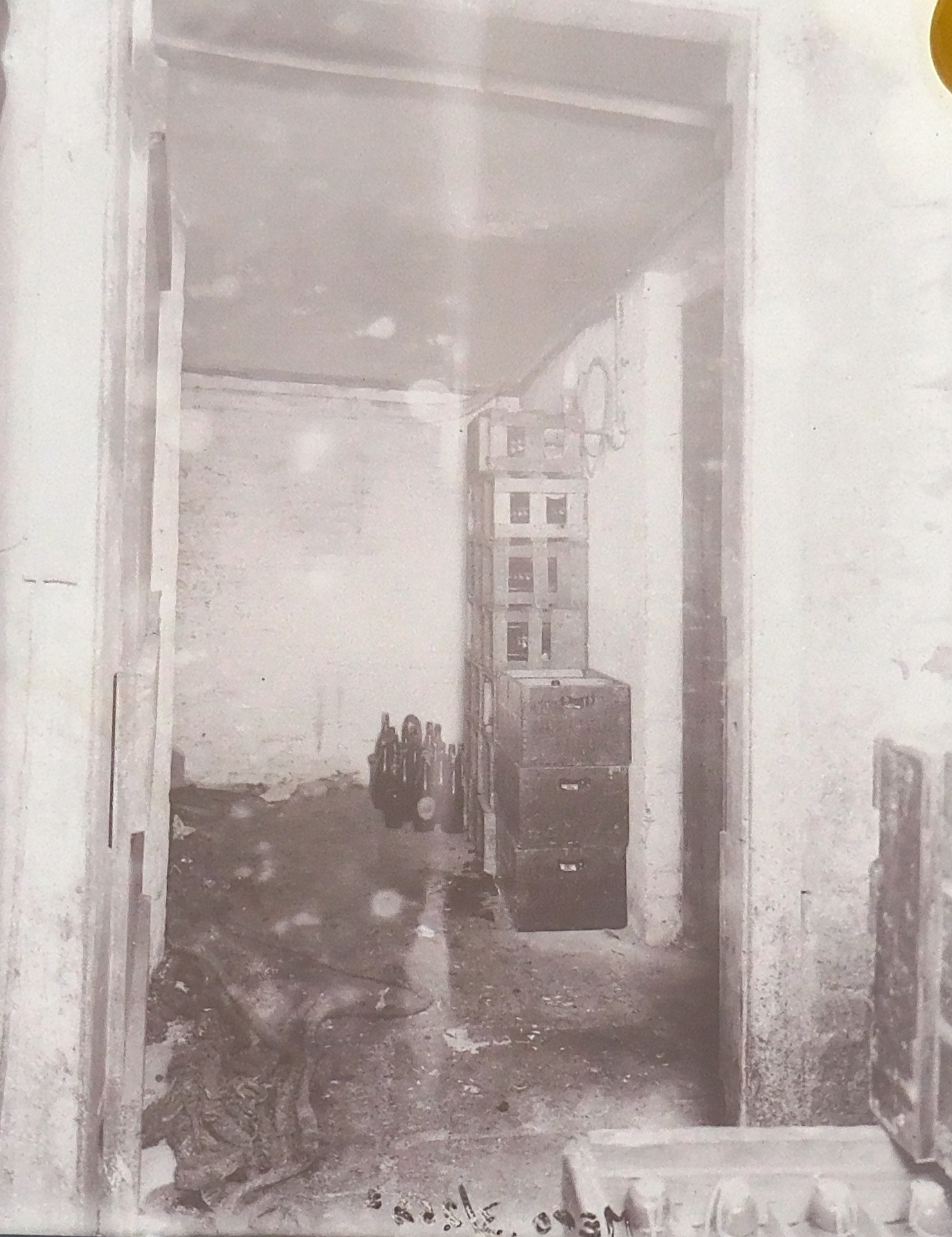
The pathologist added that when he examined the wounds, he found small flakes of glass which he put in a test-tube which were about an eighth of an inch inside the wound. He said that in another wound he found a small piece of loose bone, a small fragment of skull, underneath the wound. He added that he found a depressed fracture of her skull at the lower and interior angle of the parietal bone, noting that the bone lay bare at the bottom of the wounds. He said that on the left hand side of her skull there were wounds of a different character which were not so clearly cut, saying that they were of a more lacerated type and came to the conclusion that the wounds on her face could only have been inflicted by an instrument such as a bottle, which he said would have broken on impact, and that the wounds to the left side of her head appeared to have been made as if her head had come into contact with a door scraper. The pathologist added that he didn't think that the wounds to the top of Frances Buxton's head had been caused by the same bottle that had caused the other wounds and said that he thought that they might have been caused by her falling.
He added that he thought that a lot of unnecessary violence had been used as Frances Buxton was dying.
The pathologist added that the second most important injury to Frances Buxton was a line of strangulation that ran round the middle of the back of her neck. He said that there were two marks joining about the middle of her neck in front as if a noose had been re-adjusted or slipped. He said that the marks were practically continuous round her neck like a necklace.
The pathologist said that Frances Buxton's death was due to heart failure due to shock and concussion, which was the result of a blow or blows on the head, accelerated by strangulation.
The inquest was then adjourned at 4.30pm till 11am Tuesday 3 February 1920.
Following the inquest, the police report stated that up until that time they had not been able to trace the young man that had helped in the bar and had later joined the army. The report stated that it was known that he had joined the Royal Garrison Artillery in 1916 and that he had relations in Hounslow. However, shortly after they determined that he was living in Haliburton Road in St Margaret’s, Twickenham.
When the police spoke to the young man, he said that at the time, 1914, he had been a painter in the employ of a builder in Staines Road, Hounslow and that in the summer he met Frances Buxton who was at that time the licensee of the Star Hotel in Isleworth. He said that a friendship sprang up between them and that she invited him to help her in the bar to learn the business, noting that she was living apart from her husband.
He said that he agreed to her proposition and that about eight months later they started to co-habit and from then on it was given out that he was a partner of Frances Buxton, but that in reality that was not so, saying that he didn't receive any share of the profits, but was given 10/- per week pocket money. He noted that the first time he had connection with Frances Buxton was about six weeks after he first knew her.
The young man stated that they both drank heavily and often quarrelled and that upon occasions he had assaulted her. He admitted having a hasty temper and said that when he was in a temper, he committed acts for which he was sorry afterwards, but added that Frances Buxton had also struck him several times.
The young man said that at the end of 1914 Frances Buxton sold the Star Hotel in Isleworth and that for a time they both lived with his sister at St Kilda in Norfolk House Road, Streatham, but said that whilst they were there there were no acts of immorality committed.
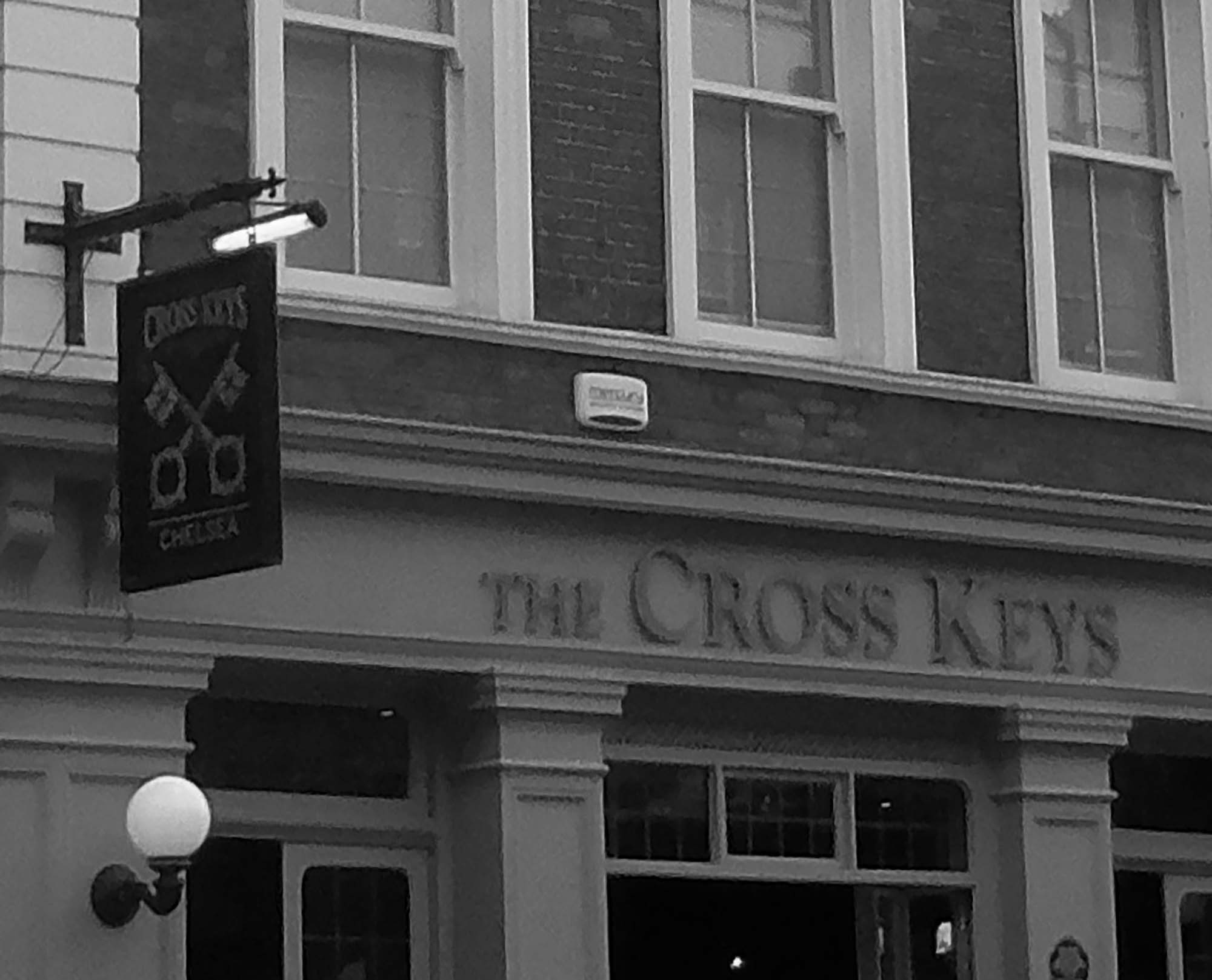
He said that in April or May 1915, he went with Frances Buxton to the Cross Keys public house in Lawrence Street, Chelsea, noting that a barmaid that had previously worked at the Star Hotel also went with them. He said that at the Cross Keys Frances Buxton occupied the bedroom on the top floor and that he occupied the one next to her and that the maid slept in the back room on the same floor. He admitted to sleeping with Frances Buxton three or four times a week whilst there. He said that there were many quarrels between them, and that Frances Buxton drank a good deal. He added that on one occasion he knocked one of her teeth out. He said that the quarrels sometimes took place in the bar and sometimes in the parlour behind the bar and were after closing time.
The young man said that he and Frances Buxton went about a good deal together and said that the customers looked upon him as a partner, but said that he had nothing to do with the money or the accounts pertaining to the business.
He said that he knew that it was the custom of Frances Buxton to place a day’s takings in a handbag or basket which she would late upstirs with her to her bedroom and subsequently put in her drawer there. He added that Frances Buxton used to keep a small notebook in which she recorded her daily takings and noted that Frances Buxton also at times carried money in her stocking in a small purse. He said that he sometimes went to the bank for her to deposit sums varying from £20 to £30.
He said that he joined the army in 1916, but that just before he did so, he assaulted Frances Buxton blacking her eyes, and that on one occasion she sent to the police for protection from his violence and that she also from time to time sent to the nearby lodging house for protection from him.
The young man said that just before he left the Cross Keys to join the army, Frances Buxton gave him £5 in the presence of the maid who had previously worked at the Star Hotel, and that he further received £7 from her, the receipt for which was later found on the premises.
He said that after being in the army for about six months he came home on leave and when he did so he visited the Cross Keys and had tea with Frances Buxton in the afternoon, but said that when she opened the house at 6pm she ordered him to leave and that they then came to high words and that Frances Buxton then sent for a policeman who advised him to go home.
He said that whilst he was in the army he wrote to Frances Buxton but said that she returned his letters unopened.
The young man concluded, by saying that he had not been in Chelsea or anywhere near the Cross Keys public house for over three years since.
He said that on the night of the murder he had met his young lady who resided with her parents in Mark Mansions, Westville Road, Shepherds Bush and that soon after at 4.30pm they had gone for tea at his sister's house in Haliburton Road where they had remained until 8pm whereupon they went to Richmond and then took a train to Hammersmith and then a tramcar to Shepherds Bush, arriving at about 9pm and then went to Mark Mansions where his young lady lived. He said that he then stayed there talking to members of his young lady’s family until about 11.30pm when they all retired for the night and then went to sleep with him sleeping with his young lady’s father in one bedroom whilst his young lady, her mother and younger sister slept in another bedroom and another son slept on a portable bed in the sitting room.
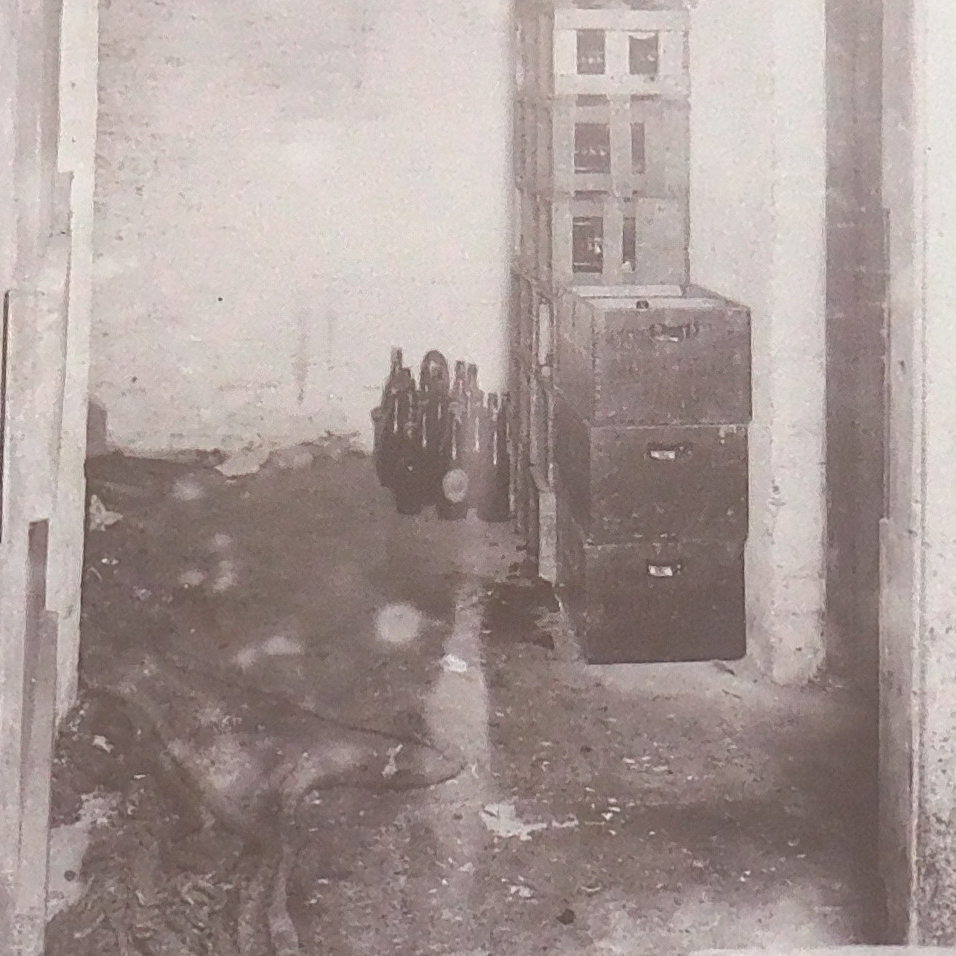
The police said that when they made enquiries into the young man’s story, they found that all the members of the young lady’s family corroborated it and said that they had absolutely on evidence against him and so they allowed him to go.
However, on 27 January 1920, a cleaner at St Georges Infirmary who had been a customer at the Cross Keys, gave evidence to a policeman saying that about three weeks earlier she had been passing through Justices Walk, which was near the Cross Keys, between 3pm and 4pm when she suddenly came face to face with the young man, who, she added, on seeing her, turned his head away as if to avoid her seeing him.
A dustman who lived in Lawrence Street and who knew Frances Buxton for the previous four years, said that on one occasion three or four years earlier, Frances Buxton had come to his lodgings and had asked him to go back with her to the Cross Keys to stay with her as she was afraid of her manager, the young man. He said that he and another man went back with Frances Buxton, which was at about closing time, and that when they arrived the young man took up a fighting attitude but eventually became quiet and they left. He then said that about three weeks before the murder, he had been passing the Cross Keys between 2.30pm and 6pm when he had seen the young man opposite the pub standing at the corner of the alleyway leading to the premises with two other men who he could not describe or identify.
The police stated that as the cleaner from the hospital and the dustman were quite certain that they had seen the young man near the Cross Keys, at about 11.30pm on 28 January 1920, they called the young man into Chelsea police station and into the CID room where he was cautioned after which they told him that they had information that he had been seen in the neighbourhood of the Cross Keys about three weeks earlier, but he said that that was a lie as he had not been in Chelsea for over three years. The police said that they then told him that two persons had come forward to say that they had seen him and that he again reiterated that that was a lie and said that he had been at work every day for a builder in Hounslow at the time.
The young man was then asked to stand up for identification along with a group of other men and he was picked out by both the cleaner and the dustman. However, the police noted that both the cleaner and the dustman had already known the young man and would have otherwise had no difficulty in picking him out. The police report noted that they, the cleaner and the dustman, might have made a mistake, but that if they did, they thought that it would have been an honest mistake.
When the police went to see the young man's employer in Hounslow, an man who was described as being highly respectable, he showed them the time-sheet for his staff and it was seen that the young man had been at work every day in December 1919 and every day in January 1920 up until 24 January.
The police then questioned the young mans' lady's father again and said that he was quite empathic that the young man had arrived at his house shortly after 9pm on 17 January 1920 and that he had slept with him that night in his bed.
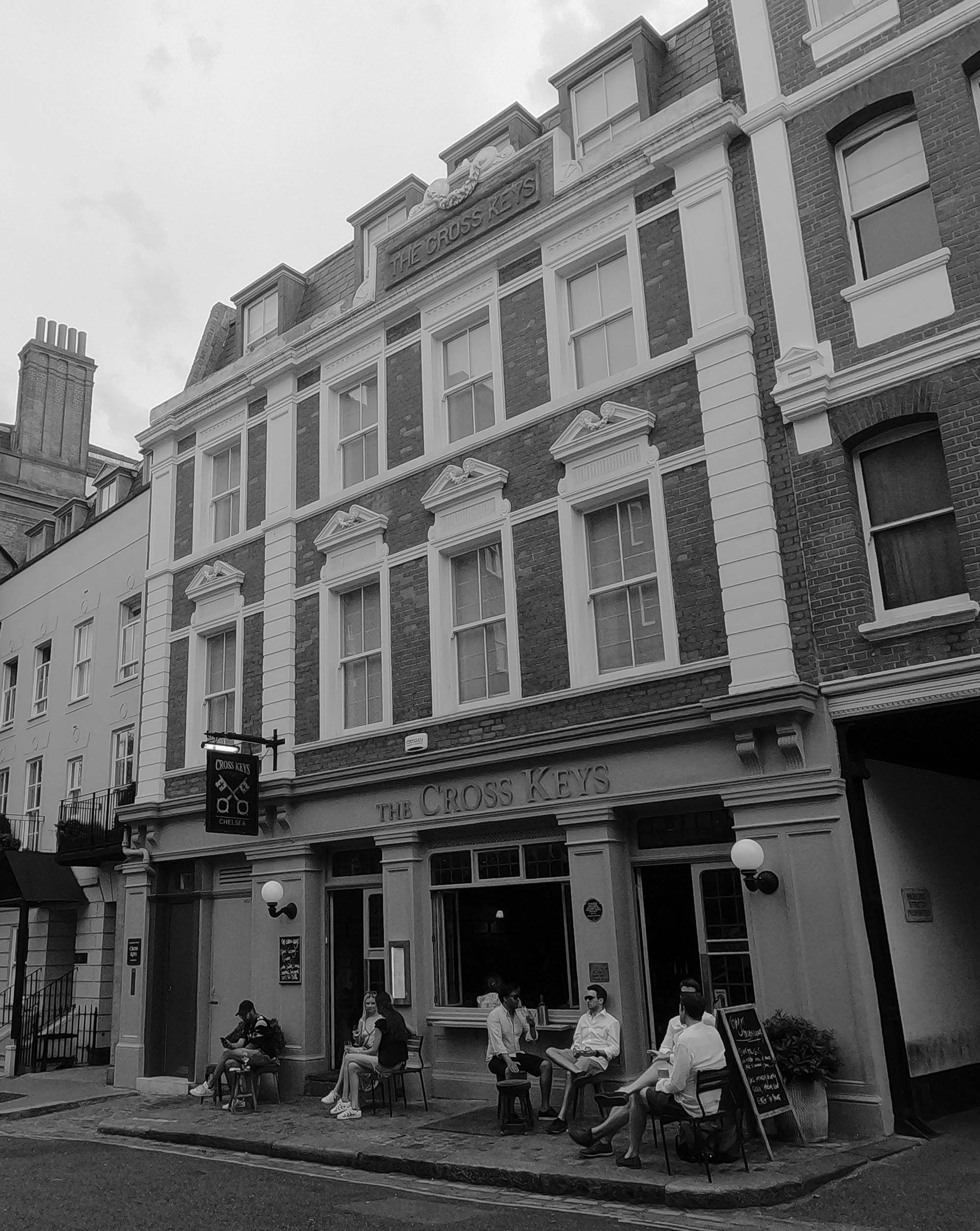
When the young man was again questioned, he revealed that he was not single but had been married some years before but that his wife had run off about eight or nine years earlier and that he was intending to get a divorce and marry the young lady that he was currently seeing.
He also added that when he had been living with Frances Buxton, he had been very jealous of the decorator’s manager and admitted that on many occasions he had violently assaulted Frances Buxton.
The police report noted that a finger print had been found on the top part of the bottle that was found in the cellar and that as such they asked the young man if he would care to have his finger-prints taken, to which he replied, 'Certainly, anything you like'.
When his fingerprints were taken and then compared to the fingerprint found on the neck of the bottle, it was found that the impression on the bottle was too blurred to allow for comparison with the young man's prints.
The police report then stated that as the young man still maintained that he had been nowhere near the Cross Keys and that his movements were corroborated by his employer, they let him go and came to the conclusion that the cleaner and the dustman had made a mistake when they said that they had seen him near the pub.
The police report reiterated that nothing in the bar or private part of the premises was found to be disturbed when they examined it and said that when they searched premises, they found £23 12. 0 1/4 in cash, a gold watch and chain that had been hanging on the bedrail, various pieces of cheap jewellery, a post-office savings bank book number 30296 that shewed deposits of £690 and two home diaries, one for 1919 and the other for 1920. They found that the last payment that Frances Buxton made to her London, County, Westminster & Parr's Bank account was on 10 January 1920 when she deposited the sum of £96. 5. 11. They also found that the last deposit that Frances Buxton had made into her Post Office Savings Book was for £70 on 14 January 1920, three days before she died.
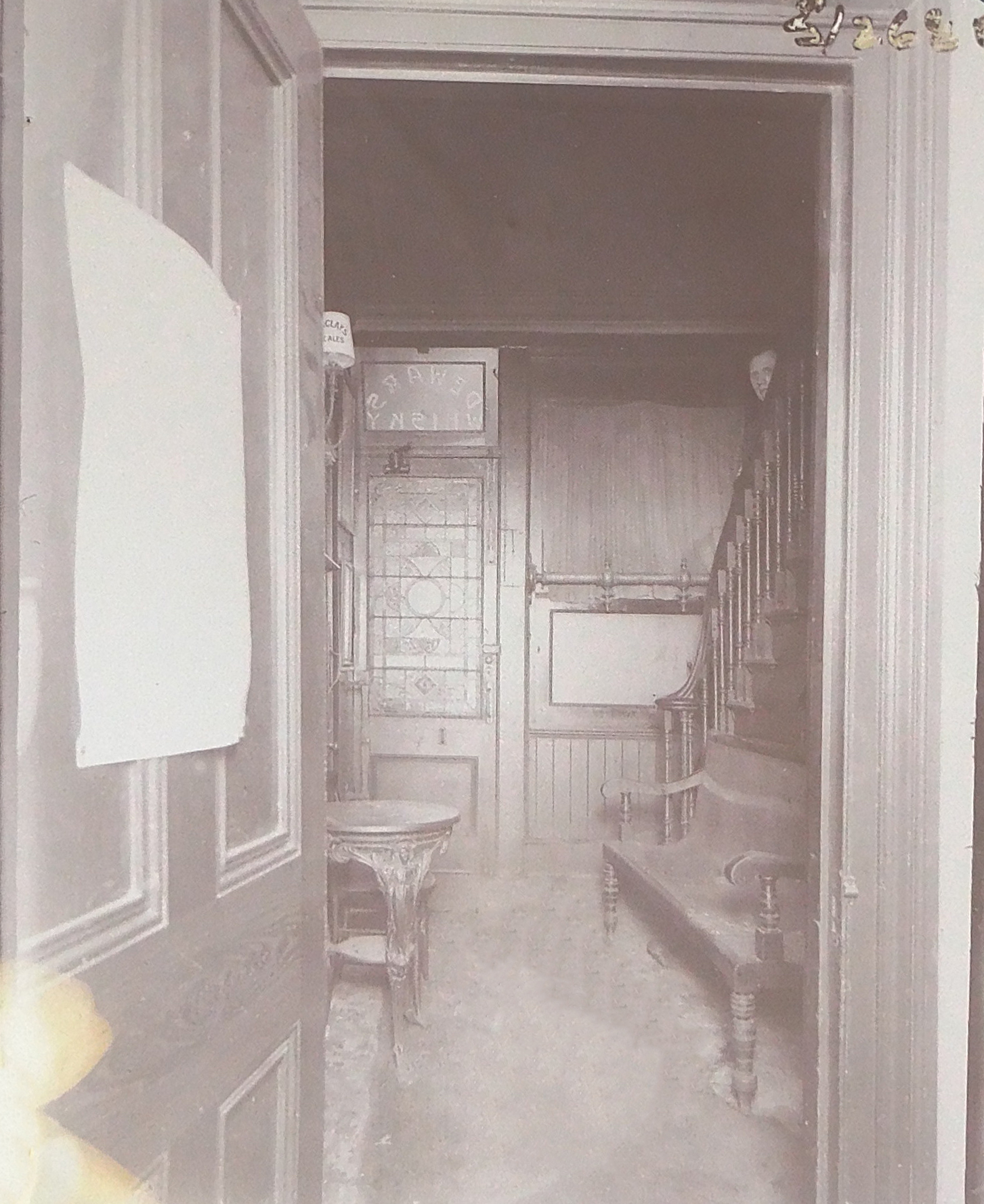
The police report noted that Frances Buxton was in the habit of entering in a diary the amount of her daily takings, and also a summary of the disbursements for housekeeping and the charwomen. They noted that the takings as entered in her diary showed that from 14 January 1920 to 17 January 1920 was £36. 6. 0d less payments to charwomen of 8/6, leaving a balance of £34. 17. 6.
The police report then stated that if they presumed that Frances Buxton, after depositing £70 on 14 January had left herself with £10 in change to which they added the takings of £34. 17. 6. as noted in her diary, that there ought to have been approximately £44. 7. 6. in the house on the night of the murder. However, the report further stated that it was known that on the night of 17 January 1920, that Frances Buxton had taken several treasury notes, but that no paper money was found in the house and that it was thought possible that that might have been stolen.
The police report stated that it therefore stood that after deducting £23. 13. 0. that was found in the house from the total of £44. 17. 6. that the murderer could not have taken much more than £20.
The police report stated that with respect to the alleged burning of Frances Buxton's body that it was found that upon examination that no attempt had been made by her assailant to obtain any inflammable material for the purpose of starting a fire, although there was plenty of wood and paper, etc., about and that from the position and the nature of the burns, they were rather inclined to suggest at the murderer might have accidently dropped a lighted match on the flimsy skirt that Frances Buxton had been wearing. It was noted by the police report that that suggestion was also considered to be feasible by the firemen that had first attended the scene.
The police report concluded that after the most exhaustive investigation that they had failed to obtain a tittle of evidence against any particular person. However, they stated that as a result of their enquiries, and after taking all the facts into consideration, they felt inclined to believe that the motive for her murder might have been more than robbery.
The police report noted that Frances Buxton was known to have told several people that she had suffered from venereal disease which was communicated to her by her husband when he returned from America and that it had taken eight years to get it out of her system. the report further stated that as a matter of fact that they knew that up to the time of her death, Frances Buxton had complained of mouth and throat trouble that she had attributed to the disease and that she was continually taking medicine for it.
The police report stated that it had since come to their knowledge that Frances Buxton had co-habited with a number of men, some of whom might have contracted the disease from her and that it was quite possible that one of them might have killed her in revenge for that.
The police report stated that during their investigation they had taken statements from practically every person who had frequented the house either for refreshments or to attend the Slate Clubs that were held there, with particular attention paid to the people that had been in the house on Saturday 17 January 1920, but without result.
However, they said that there was still suspicion against the man described as the 'Glad eye man' who had visited the pub on the three afternoons preceding the murder. It was noted that the press had freely circulated the 'Glad eye man’s description but that he had not come forward. The report noted that it was quite possible that the man could have given a satisfactory account of his movements, but stated that until he came forward, he was being regarded as a suspect.
The police report concluded that they were still trying to trace the 'Glad eye man' and the lodger from Clifton Road, Camberwell, who could not be traced.
It was reported on 8 May 1920 that on 24 March 1920 an assistant ships cook called a Scotland Yard and said, 'On the 30th January 1920 I signed on as an assistant cook on the SS Valencia, (Cunard Line) at the Surrey Commercial Docks. The destination of the ship was New York. A cook aged between 45 and 50, height 6ft, or over, rather stout, yellowish face, clean shaven, was troop cook on the same ship. I read in the daily papers before I went to the ship that a tall man was wanted for the Chelsea Murder. I thought by the cook's actions and the way he behaved that he might know something about the affair. He seemed nervous and unable to look anyone in the face. Just before the ship left London, he locked himself in the galley and did a lot of washing. He told me he intended to do a lot of washing. I did not see any blood on the clothes. On our arrival in New York he spoke about the good time he had from women and he mentioned the 'Cross Keys' but he did not say if that was the name of a public house or if it was the 'Cross Keys' public house Chelsea. He said he lived in Richmond. The superintendent Shore Steward, Surrey Commercial Docks, engaged the troop cook and me'.
The police said that when they heard what the assistant cook had to say they made some enquiries and found that he had sailed on the SS Valencia on 31 January 1920 and that when he had signed on he had given his address as being Rhodes Street, East London, South Africa. They found that he had been known to the Assistant Shore Superintendent of the docks for several years as a seafaring man and that he had nothing detrimental to say about him.
Whilst his description matched that of the 'Glad eye man', when his photo was shown to people that had seen the 'Glad eye man', they failed to identify him and later said that they were certain that he was not the man they had seen.
In conclusion, the police said that they had nothing to connect him with the murder of Frances Buxton but kept his photo for future reference.
On 29 August 1922 a woman told a policeman who was on annual leave in a public house in Forest Gate that she knew who the murderer was, a ticket collector, and that some of the jewellery stolen was in the possession of her sister who he had co-habited with. She said that she had been to see her mother on 11 June 1922 and that during a conversation with her, her mother had said, 'Oh, your sister is in trouble, you know that murder that was over in Chelsea, of the woman being murdered in the pub after it was closed, she was a relation of the ticket collector'. She said that her mother also noted that the ticket collector had enquired the way to Chelsea in the week before the murder and that her sister was worried over the long time that he had been away. When the police spoke to the woman that had been living with the ticket-collector, she said that she had adopted a boy who was at the time an inmate at the Gorden Boys' School in West End, Woking and that once when he was on holiday he had said to her, whilst speaking of the murder, 'Grandma, the ticket collector done it'.
The woman said that on another occasion she had visited her sister with whom the ticket collector had been living with and found that she had a disfigured face and told her that the ticket collector had beaten her because she had wanted to borrow some jewellery that he had, which she thought might have been Frances Buxton's jewellery.
After hearing the story, the police went to see the mother of the woman that was supposed to be living with the ticket collector and found her to be bedridden. They said that they corroborated the women’s' story and said that the mother said that the exact words that the boy had used were, 'Mum has been knocked about, and do you know that he done that murder at Chelsea'.
When the police found the boy, he denied that he said that the ticket collector had done the murder, but admitted that he had said that another relative of the ticket collector had done it and then supplied details about the jewellery.
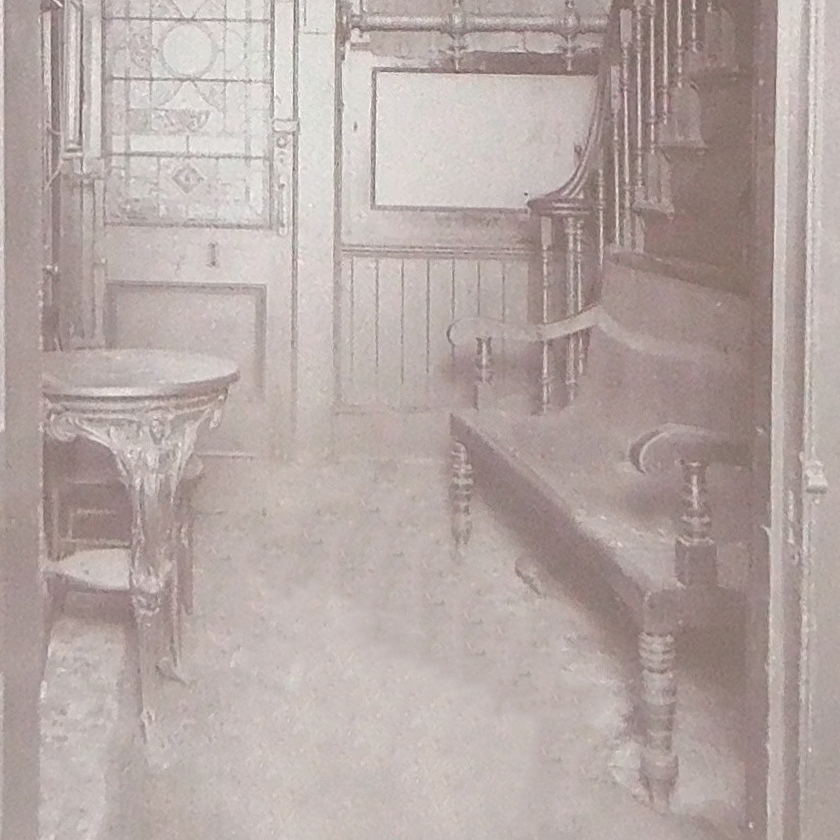
When the police took a description of the ticket collector they found that it resembled that of the man with the 'Glad eye' and enquiries were made to find him and it was found that he lived in Shortlands Road in Leyton and the police set up observation on his house and on the morning of 2 September 1922 at 9am they followed him out of his house on his way to work, dressed in his ticket collectors uniform, to Hoe St Station where they stopped and spoke to him. He agreed to go to the police station with them after visiting Liverpool Street Station to pay excess fares he had collected on the previous day and deliver some tickets.
When he was questioned, he admitted to being the ticket collector referred to and to having co-habited with the women’s sister at Shortlands Road in Leyton and said that he was a cousin of Frances Buxton's husband.
He said that he remembered 17 January 1920 at which time he had been lodging at a house in Willow Grove, Plaistow with another woman although he said he was meeting the woman that he later co-habited with, and who was the other woman's sister, at that time on a nightly basis. It was noted that the woman that he had been living with in the lodging house said that the ticket collector had been away all night on 17 January 1920. He said that he also remembered 19 January 1920 when he read about the murder and said that that was the first that he knew of it. He denied having gone to the Cross Keys public house in the days before the murder and said that he had been working during the week preceding 18 January 1920 from 9am to 6pm daily and that on the night of 17 January 1920 he had been with the other woman to Upton Park and other places in the East End, finally leaving her at about 10pm at the Spotted Dog public house in Maryland Point.
He said that after he read about the murder he went to the Vinters' Arms public house in Fetter Lane which was then occupied by a nephew of Frances Buxton's husband and was informed of Frances Buxton's inquest which he attended. He also admitted that he had at one time had an argument with the woman that he was co-habiting with in which she had said to him, 'You know more about the murder of Mrs Buxton then I do'.
However, when the police made enquiries about the days that the ticket collector had been working they found that he had been working for the Great Eastern Railway Works in Angle Lane, Stratford from 9am to 6pm daily on 14, 15, 16 and 17 January 1920 and that it was quite clear that he could not have visited the Cross Keys pub at the time which the 'Glad eye man ' was seen.
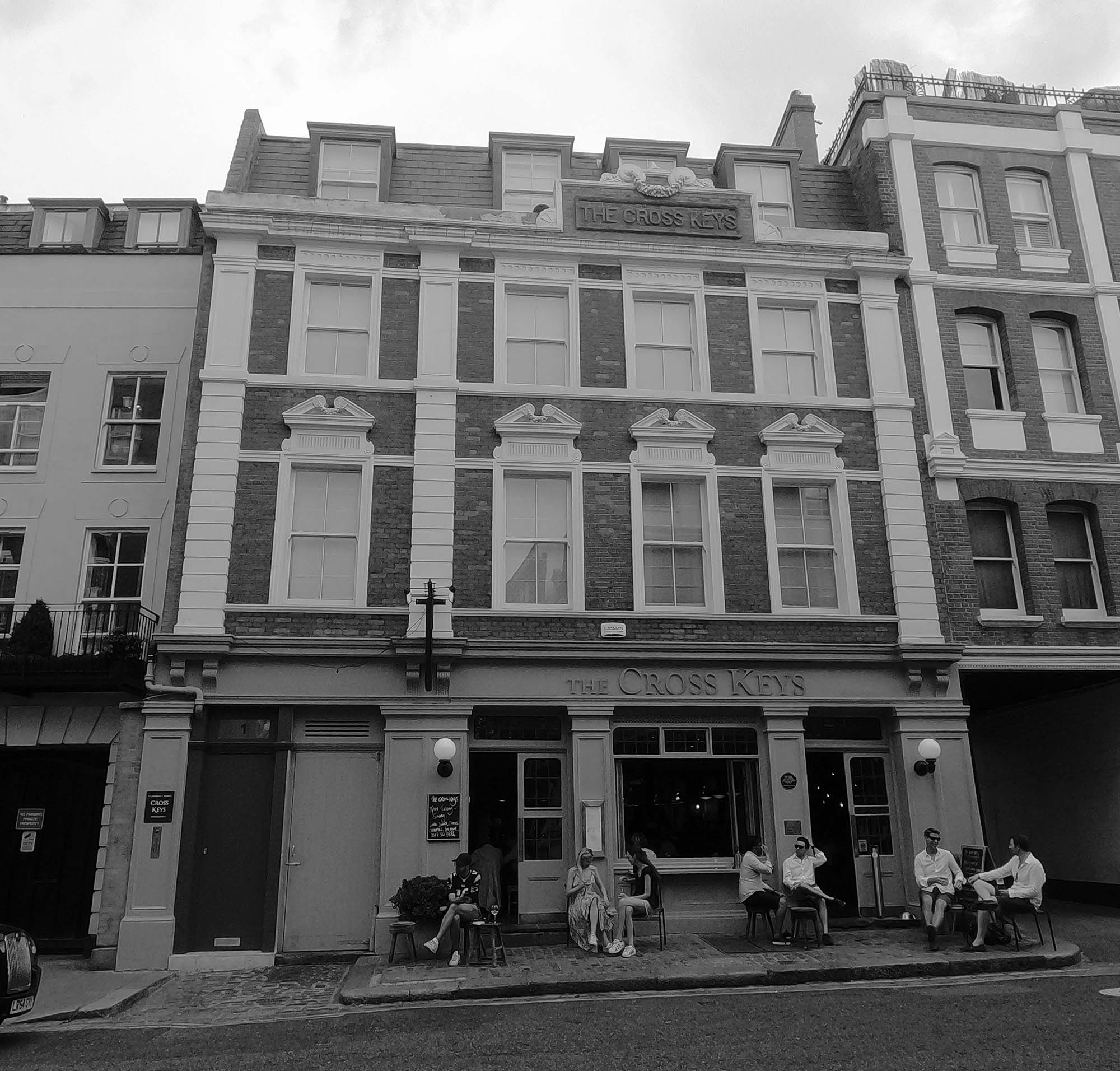
They added that when they went to his lodgings at Shortland Road in Leyton where he was co-habiting with the other woman, they found nothing in the nature of jewellery stolen from the Cross Keys and noted that in fact all they found were three cheap brooches such as could be found in any bazaar where trashy jewellery was sold.
As such, the police concluded that there was nothing to connect the ticket collector with the crime and noted that even if he had been absent from his lodgings on the night of 17 January 1920 that it would have been hopelessly insufficient evidence upon which to found a charge.
In 1927, it was reported that a man confessed to the murder of Frances Buxton. however, it was later thought to have been a hoax. The story went that a well-known writer of books of crime which had a wide circulation and included works such as 'A crook's Confessions' and 'The Autobiography of a Crook', called Scotland Yard to say that he had a man in his office who had recently been released from a prison in Lille, France who had met another English man there who had also been incarcerated by the French authorities and who had confessed to the murder of Frances Buxton. Following his call to Scotland Yard the crime author contacted Fleet Street with the purpose of selling his hot 'copy' and his sensational story was published by several papers. However, it was later learnt, after the story had been circulated in the press that the police were not pursuing the confession after it was found that no creedence could be put on the released prisoners word and it was thought that the crime author and released prisoner had conspired to 'spoof' Scotland Yard and the press in order to claim the money they would have got in selling the story to the press.
In 1932 an anonymous postcard was received by the police from America claiming that a man just released from the State Prison in New York and who was living in Amityville, Long Island was responsible for Frances Buxton's murder, but the City of New York Police Department stated that when they looked into it they determined that he had been working as a welder at the time of the murder in Atlantic Avenue, Brooklyn, but had been a seaman on the SS Mesaba with the Atlantic Transport Lines in 1916 and had twice then been to London in 1916.
The postcard read, 'Dear Sir, The man who killed Mrs Frances Buxton in January 1920 of the Crosskeys Inn on Laurence Street Chelsea is an ex-convict of Brooklyn, New York, when you arrest him I will testify against him not before. Your servant, One Hoo Knows. The postcard had 6 2 cent stamps on it and was marked Brooklyn, NY and dated 14 April 12.30am and addressed to Field-Marshall- Viscount Byng, Commissioner London Police, London, England.
The value of Frances Buxton's estate was later determined to be £1,436. 8s. 6d.
see "Unsolved Murders." Times [London, England] 28 Dec. 1922: 3. The Times Digital Archive. Web. 4 Mar. 2013.
see Portsmouth Evening News - Monday 26 January 1920
see Western Times - Monday 19 January 1920
see Dundee Evening Telegraph - Tuesday 03 February 1920
see Western Times - Tuesday 20 January 1920
see Sunday Post - Sunday 24 July 1927
see Lancashire Evening Post - Thursday 22 January 1920
see Dundee Courier - Wednesday 21 January 1920
see National Archives - MEPO 3/268B
see Illustrated Police News - Thursday 22 January 1920